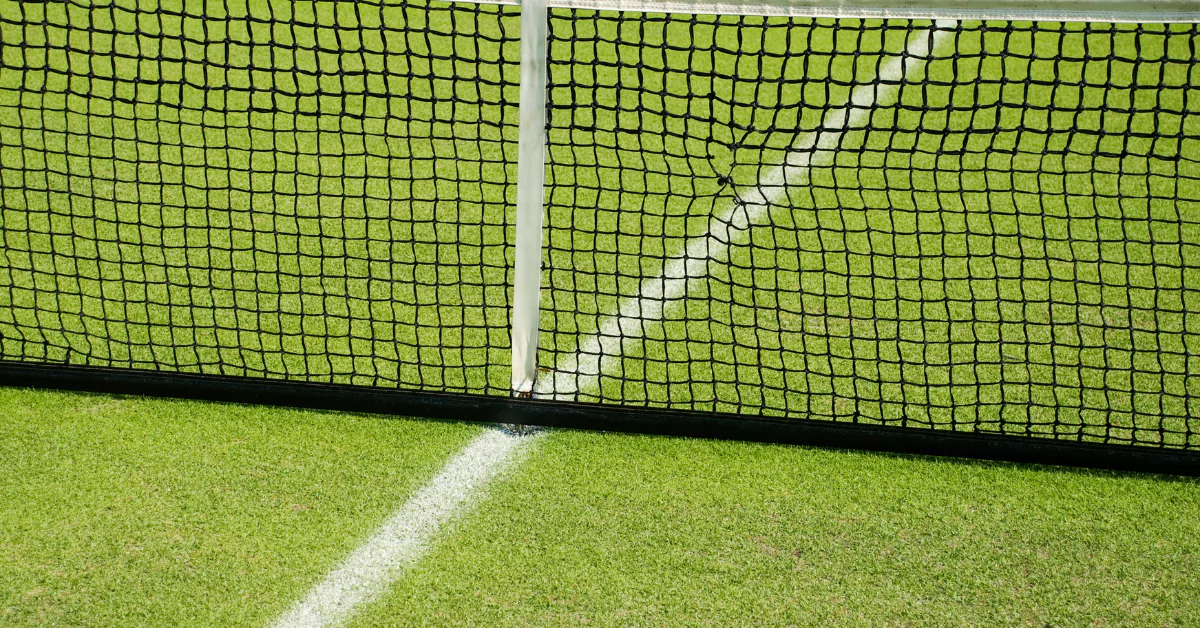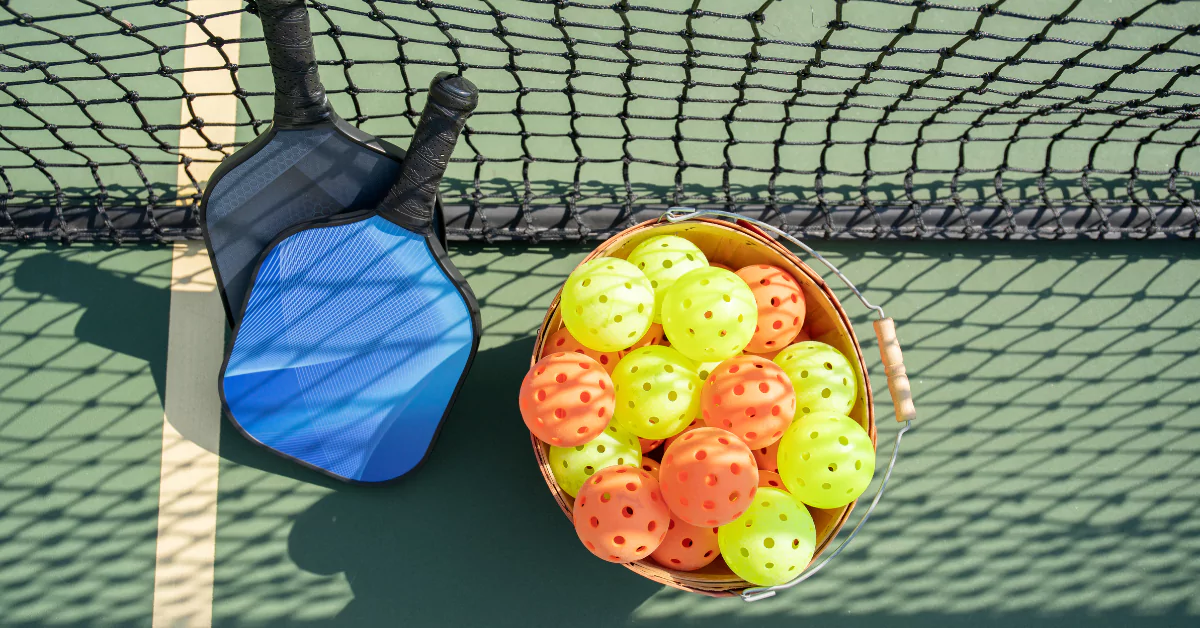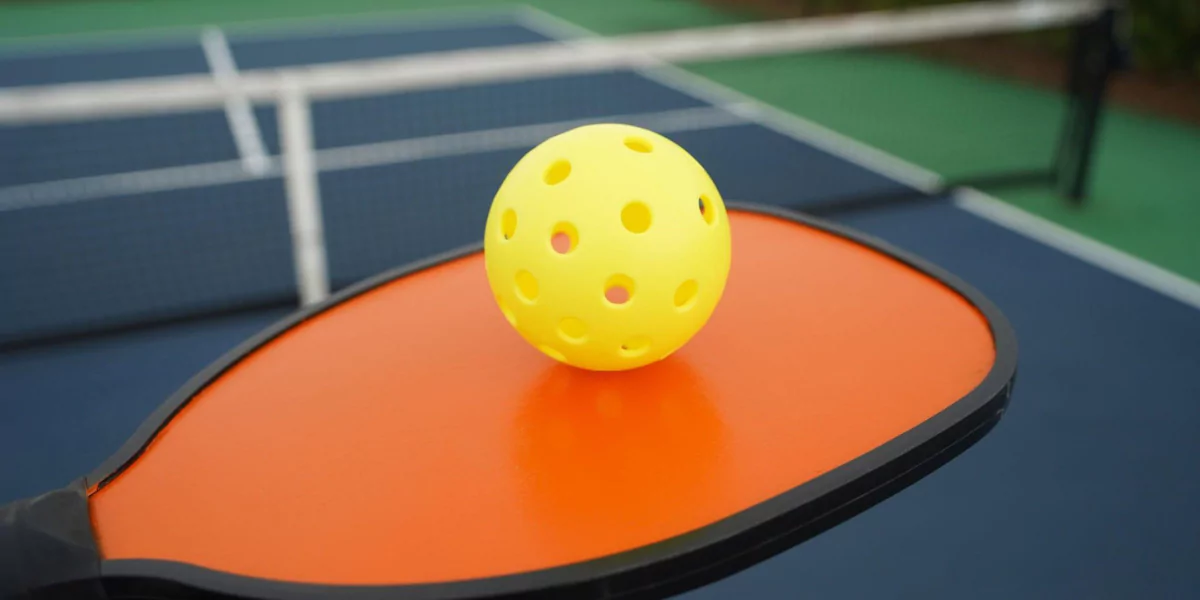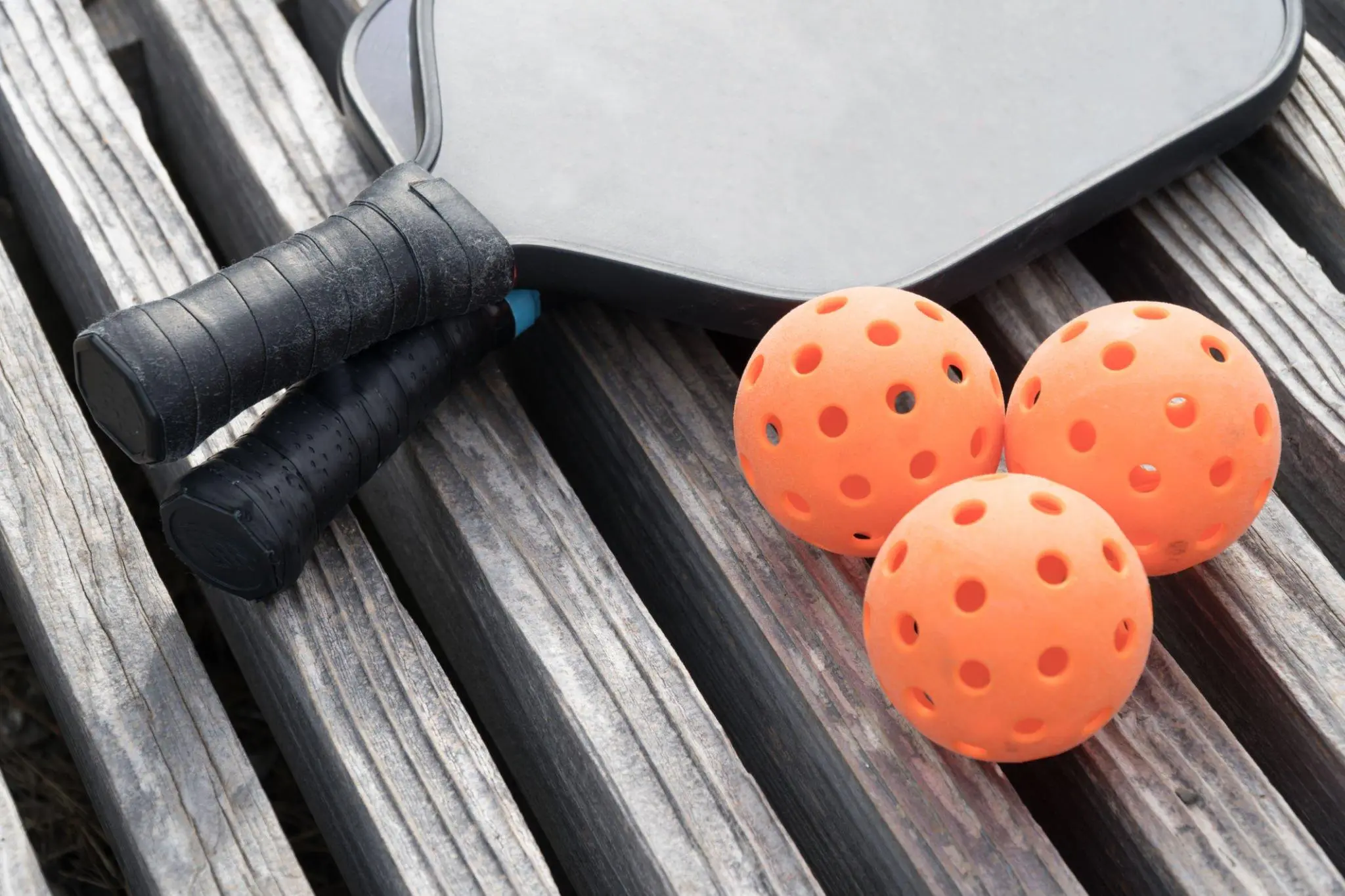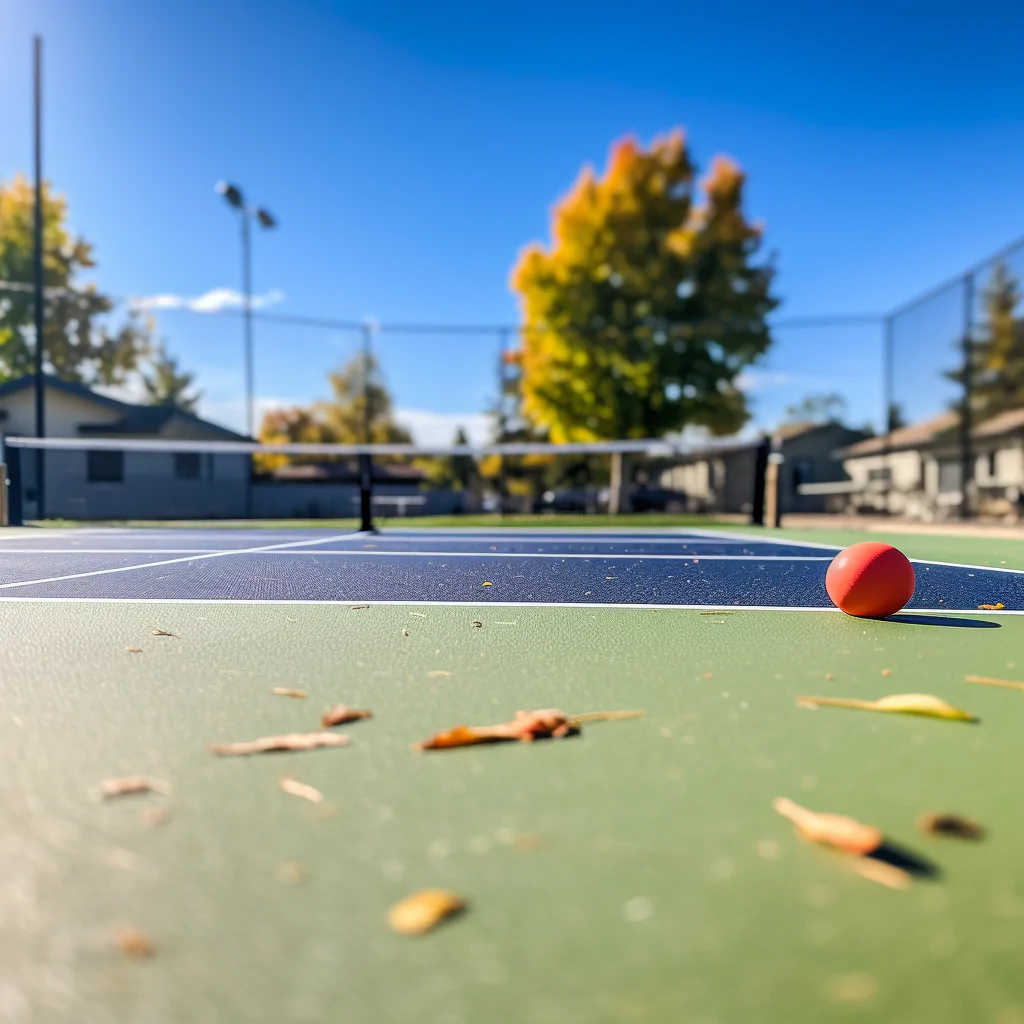I know the importance of court essentials in sports. One essential that can significantly impact gameplay is the net height. In this article, I will examine the differences between pickleball net height and tennis net height and its impact on gameplay.
While both sports share similarities, including the use of paddles to hit a ball over a net, there are significant differences that players must consider. Pickleball net height is lower than tennis net height, and this can significantly impact gameplay strategies and shot selection. Understanding the ideal net height for each sport is essential for fair gameplay and player development.
Key Takeaways
- Pickleball net height is lower than tennis net height
- Net height can impact gameplay strategies and shot selection
- Understanding the ideal net height for each sport is essential for fair gameplay and player development
Pickleball Net Height: A Closer Look
When it comes to pickleball, understanding proper net height is essential to ensure fair gameplay for all players. The official net height for pickleball is 36 inches at the center of the court, while the net itself should be 22 feet wide and at a minimum of 34 inches high at the posts.
For beginner players, there are often adjustments made to the net height to accommodate varying skill levels. Lowering the net to 34 inches or even 32 inches can make it easier to clear the net and keep the ball in play. However, it is important to note that any official matches or tournaments must adhere to the standard 36-inch net height.
Having the correct net height is crucial for maintaining the integrity of the game. If the net is too high, it becomes more difficult to clear the ball over the net and can give an unfair advantage to taller players. On the other hand, if the net is too low, it can result in more dinks and slower gameplay, detracting from the fast-paced nature of the sport.
Pickleball Net Height: A Closer Look
It is also worth noting that the net height can be impacted by external factors, such as court surface and temperature. A softer court surface may result in a slightly lower net height, while colder temperatures can cause the net to contract and become tighter, ultimately raising the height. Therefore, it is important to regularly check the net height and make any necessary adjustments to ensure optimal gameplay conditions.
Overall, understanding and adhering to proper pickleball net height is essential for fair competition and enjoyable gameplay. Whether playing recreationally or competitively, having the correct net height ensures a level playing field for all players.
Tennis Net Height: Understanding the Standard
While pickleball and tennis share some similarities in court size and shape, one key difference between the two sports is the height of the net. In tennis, the standard net height is 3 feet, or 0.91 meters, at the center of the court. This height is measured from the ground up to the top of the net, which is suspended over the center of the court by two vertical posts.
The standard net height in tennis has remained unchanged since the inception of the International Tennis Federation (ITF) in 1913. The ITF regulates many aspects of tennis, including the standard net height, which is used in all professional and amateur tournaments around the world.
For pickleball players who are accustomed to a lower net height, adjusting to the higher tennis net can present a challenge. However, with practice and adaptation, many pickleball players are able to transition smoothly to the higher net height when playing on a tennis court.
It is worth noting that playing pickleball on a tennis court requires some adjustments beyond just the net height. The larger court size and different court markings may also impact gameplay, and players should take these differences into consideration when making the transition.
Comparing Pickleball and Tennis Net Height
While pickleball and tennis share some similarities in terms of court layout and gameplay mechanics, there are key differences that set these sports apart. One of the most significant differences is the net height. In tennis, the standard net height is 3 feet (0.914 meters) tall at the center and 3.5 feet (1.07 meters) tall at the posts, while the standard net height for pickleball is 36 inches (0.914 meters) at the center and 34 inches (0.864 meters) at the sidelines.
These differences in net height have a significant impact on gameplay tactics and shot selection. For example, the lower net height in pickleball allows for more aggressive shots and a greater emphasis on ball placement. In tennis, the higher net height requires players to hit the ball with more precision and use more spin to keep the ball in play.
When comparing pickleball and tennis net height, it’s important to note that while pickleball nets are shorter, they are also wider. This wider net allows for more room for players to hit the ball over the net, which can lead to longer rallies and more exciting gameplay.
Adjusting Pickleball and Tennis Net Height
When playing on a court designed for one sport but using equipment for the other, adjustments need to be made to ensure a fair game. For example, when playing pickleball on a tennis court, the net height may need to be lowered to the standard pickleball height of 36 inches (0.914 meters) at the center and 34 inches (0.864 meters) at the sidelines. Similarly, when playing tennis on a pickleball court, the net height may need to be raised to the standard tennis height of 3 feet (0.914 meters) at the center and 3.5 feet (1.07 meters) at the posts.
It’s important to note that these adjustments may not be exact, as the court dimensions for each sport are also different. However, making the necessary changes to the net height can help ensure a fair and competitive game.
Factors Influencing Pickleball Net Height
When it comes to pickleball net height, there are several factors to consider in order to ensure fair and competitive gameplay. These factors include:
- Player skill level: Depending on the skill level of the players, the ideal net height may vary. Generally, higher skilled players prefer a lower net height for faster gameplay, while beginners may benefit from a higher net height for easier ball clearance.
- Court surface: The type of court surface can also impact the ideal net height. For example, on a court with a hard surface, a lower net height may be preferred to allow for smoother bounce and faster gameplay.
- Weather conditions: Wind and other weather conditions can also impact the ideal net height. On a windy day, a lower net height may be preferred to reduce the effect of the wind on the ball’s trajectory.
It’s important to keep in mind that the standard net height for pickleball is 36 inches at the center of the court. However, there may be variations for beginners or specific tournament rules. Ultimately, the ideal net height should provide a balance between fair play and competitive challenge.
Pickleball Net Setup And Troubleshooting: A Comprehensive Guide
Factors Influencing Tennis Net Height
While the standard net height for tennis is 3 feet, 6 inches (1.07 meters), there are several factors that can influence the net height in certain situations. The International Tennis Federation (ITF) regulations dictate that all professional matches adhere to this standard height, but other levels of play may have some variation.
One key factor that can impact net height is the surface of the court. Clay courts, for example, tend to have a softer surface that can make it more difficult for players to hit the ball with precision. In these cases, some players may prefer to raise the net slightly to make the ball easier to reach.
Factors That Can Affect Tennis Net Height
| Factor | Effect |
|---|---|
| Surface of the court | May require adjustments to net height |
| Type of ball used | May require adjustments to net height |
| Player skill level | No effect on standard net height, but may require adjustments for skill-specific training |
| Weather conditions | May require adjustments to net height |
Additionally, the type of ball used can also affect the net height. Some tennis balls are heavier or lighter than others, which can impact how the ball travels through the air. In these cases, players may adjust the net height to compensate for these differences.
It’s important to note that while certain factors may require adjustments to the net height, the standard height of 3 feet, 6 inches should always be maintained whenever possible to ensure fair play and consistency across matches.
Adjusting Pickleball Net Height on a Tennis Court
When playing pickleball on a tennis court, it is necessary to adjust the net height to ensure fair and optimal gameplay. The standard net height for pickleball is 36 inches at the center, while tennis has a net height of 3 feet at the center.
| Net Height | Pickleball | Tennis |
|---|---|---|
| Standard | 36 inches | 3 feet |
To adjust the net height for pickleball on a tennis court, you will need to lower it by about 2 inches. This can be done by using a net tension system or by adjusting the net clips. It is important to ensure that the net is level and secure before starting play.
When adjusting the net height, it is crucial to maintain consistency throughout the game. This ensures fair play and prevents any advantage or disadvantage for either team. It is also important to communicate any adjustments made with the other players, to avoid confusion or disagreements during play.
Impact of Net Height on Game Strategy
Net height plays a crucial role in determining the game strategy in both pickleball and tennis. A higher net height in pickleball results in more volleys and less dinking, while a lower net height encourages more dinking and precise placement of shots. Similarly, a higher net height in tennis can make serving more challenging and encourage players to play deeper in the court, while a lower net height can lead to more volleys and aggressive play at the net.
Understanding the impact of net height on game strategy is essential for players of both sports. In pickleball, players may choose to adjust their shot selection and placement depending on the net height, while in tennis, players may need to adapt their serving technique based on the net height of the court.
Impact of Net Height on Game Strategy in Pickleball
When the net height in pickleball is higher, players may choose to play more aggressively and avoid dinking shots, as these are more difficult to execute over the higher net. They may also need to adjust their positioning on the court to be closer to the net to increase their chances of a successful volley.
Conversely, when the net height is lower, players may opt for a dinking game, focusing on precise shot placement and controlling the pace of the game. This can lead to longer rallies and a slower pace of play, as players work to outmaneuver each other with their shots.
Impact of Net Height on Game Strategy in Tennis
In tennis, a higher net height can make serving more challenging, as players need to hit the ball higher over the net to get it in play. This can lead to more missed serves and a higher number of double faults. A higher net height can also encourage players to play deeper in the court, relying on groundstrokes and volleys to win points.
On the other hand, a lower net height can lead to more aggressive play at the net, as players are able to hit volleys that are closer to the ground. This can lead to more frequent net play and shorter rallies, as players work to take advantage of their positioning at the net.
Overall, understanding the impact of net height on game strategy is critical for excelling in both pickleball and tennis. By adapting their gameplay strategy to the net height, players can gain a competitive edge and improve their chances of success on the court.
Master Pickleball Net Height: Your Essential Guide To Winning
Importance of Consistency in Net Height
Consistency in net height is a crucial element in both pickleball and tennis. Keeping the net at the correct height helps ensure fair play and can impact player development.
When the net height varies, it can create an imbalance in gameplay that favors certain types of players or shots. For example, a lower net height can make it easier for players to hit more aggressive shots, while a higher net height can favor players who rely on finesse and placement.
Consistent net height also contributes to a player’s ability to develop their skills with a specific shot or technique. When the net height changes, players may need to adjust their approach, which can impact their ability to refine their skills over time.
Therefore, it is important to always check and adjust the net height before playing pickleball or tennis, regardless of the court or location.
Adapting to Different Net Heights
Transitioning between pickleball and tennis can require some adjustments, particularly with regards to net height. Here are some tips to help you adapt:
- Pay attention to the net height. Before you start playing, take a moment to measure the net height and adjust it if necessary. This will ensure a fair game and help you get a sense of the court dimensions.
- Practice your shots. Different net heights will require different shot selection, so take some time to practice your shots and develop a feel for the court. For example, a lower net height in pickleball may require more dinking and drop shots, while a higher net height in tennis may require more lobs and serves.
- Focus on footwork. Adjusting to different net heights can also impact your footwork and positioning on the court. Be prepared to move differently and adjust your stance based on the net height.
- Use appropriate equipment. Make sure you are using the proper equipment for each sport, including paddles and balls that are designed for the respective net heights.
- Stay adaptable. Lastly, remember to stay adaptable and flexible in your approach. Each game and each opponent may require different strategies and adjustments, so be willing to make changes as you go.
Equipment Considerations for Net Height
Using appropriate equipment is crucial for both pickleball and tennis players to ensure optimal gameplay and fair competition. When it comes to net height, selecting the right equipment can make all the difference.
Pickleball Nets:
| Net Type | Net Height |
|---|---|
| Standard Pickleball Net | 34 inches at center, 36 inches at sidelines |
| Portable Net System | Adjustable to standard height or 31 inches for beginners |
Pickleball players should use a standard net or a portable net system that can be adjusted to the proper height. It’s important to ensure the net is taut and level to avoid any discrepancies during gameplay.
Tennis Nets:
| Net Type | Net Height |
|---|---|
| Singles Match Net | 3 feet at center, 3.5 feet at posts |
| Doubles Match Net | 3 feet at center, 3 feet 6 inches at posts |
If playing pickleball on a tennis court, players should use the existing tennis nets. However, it may be necessary to adjust the net height to the proper pickleball height of 34 inches at center and 36 inches at sidelines. This can be done by lowering the center of the tennis net or using a conversion kit specifically designed for this purpose.
It’s essential to use high-quality equipment that is designed for the specific sport and net height. This will ensure fair gameplay and prevent any unnecessary injuries or damages to the equipment. As a player, investing in quality equipment is a worthwhile investment in your game.
Conclusion
Understanding the proper net height in pickleball and tennis is essential for fair competition and optimal gameplay. While both sports require a net, the net height varies significantly between them.
By examining the standard net heights for each sport and the factors that impact them, we can see how variations in net height can influence game strategy, shot selection, and match dynamics. It’s crucial for players to adapt to different net heights and use appropriate equipment to ensure a level playing field.
Consistency in net height is critical in both sports, and players should always strive to maintain the recommended net height. Whether playing pickleball or tennis, understanding and adhering to the proper net height can help players improve their skills, enhance their playing experience, and enjoy fair competition.
FAQ
Q: What is the standard net height for pickleball?
A: The standard net height for pickleball is 36 inches at the center of the court.
Q: Are there any variations in net height for beginners?
A: Yes, beginners may adjust the net height to 34 inches to allow for a more manageable learning curve.
Q: What is the standard net height for tennis?
A: The standard net height for tennis is 3 feet, or 42 inches, at the center of the court.
Q: How does the net height in pickleball compare to tennis?
A: Pickleball has a lower net height of 36 inches compared to the 42-inch net height in tennis.
Q: What factors influence pickleball net height?
A: Player skill level, court surface, and other variables can influence the ideal net height for pickleball.
Q: What factors influence tennis net height?
A: ITF regulations and court surface are factors that determine the standard net height in tennis.
Q: How can I adjust the net height for pickleball when playing on a tennis court?
A: When playing pickleball on a tennis court, you can adjust the net height to 34 inches using portable nets or equipment designed for pickleball.
Q: How does net height impact game strategy?
A: Net height can affect shot selection, gameplay tactics, and match dynamics in both pickleball and tennis.
Q: Why is consistency in net height important?
A: Consistent net height ensures fair competition and aids in player development in both pickleball and tennis.
Q: How can I adapt to different net heights when transitioning between pickleball and tennis?
A: Adapting to different net heights requires making necessary adjustments and maintaining a consistent level of play through practice and experience.
Q: Should I use specific equipment for different net heights?
A: It is recommended to use appropriate equipment, such as nets and paddles, that align with the recommended net heights for each sport.
